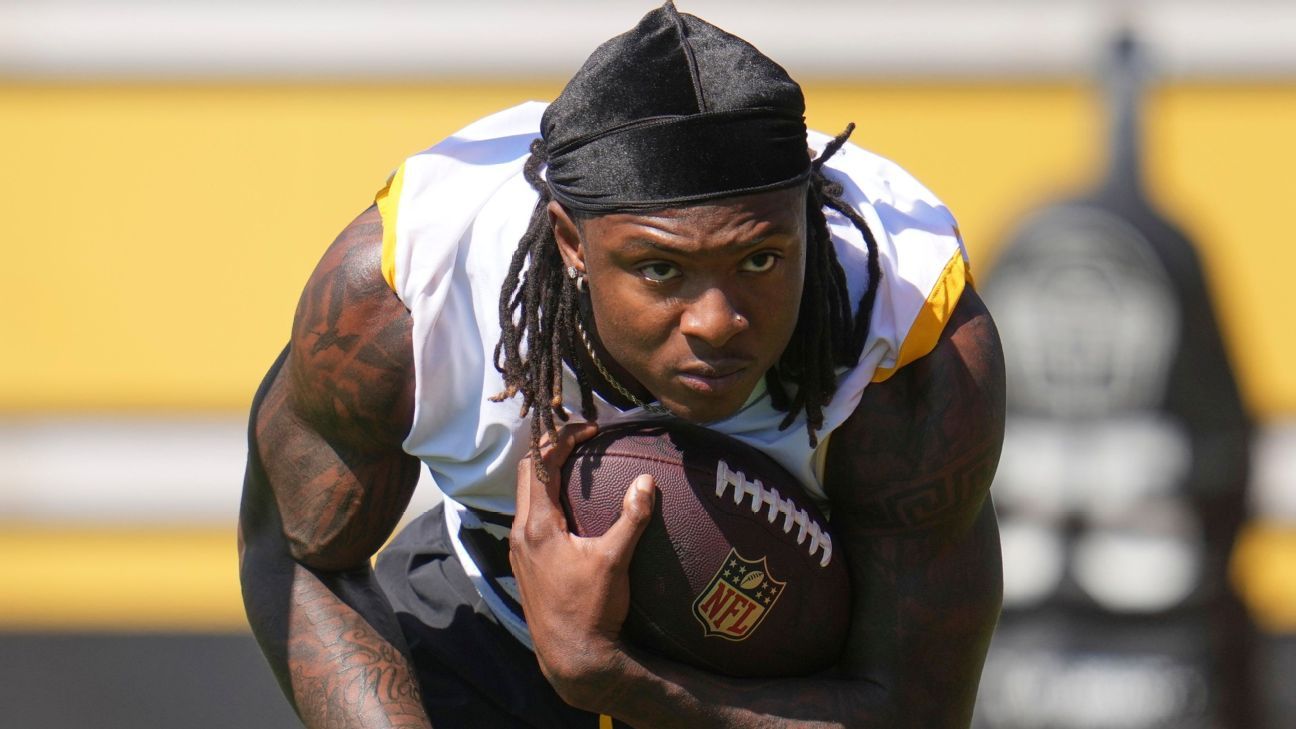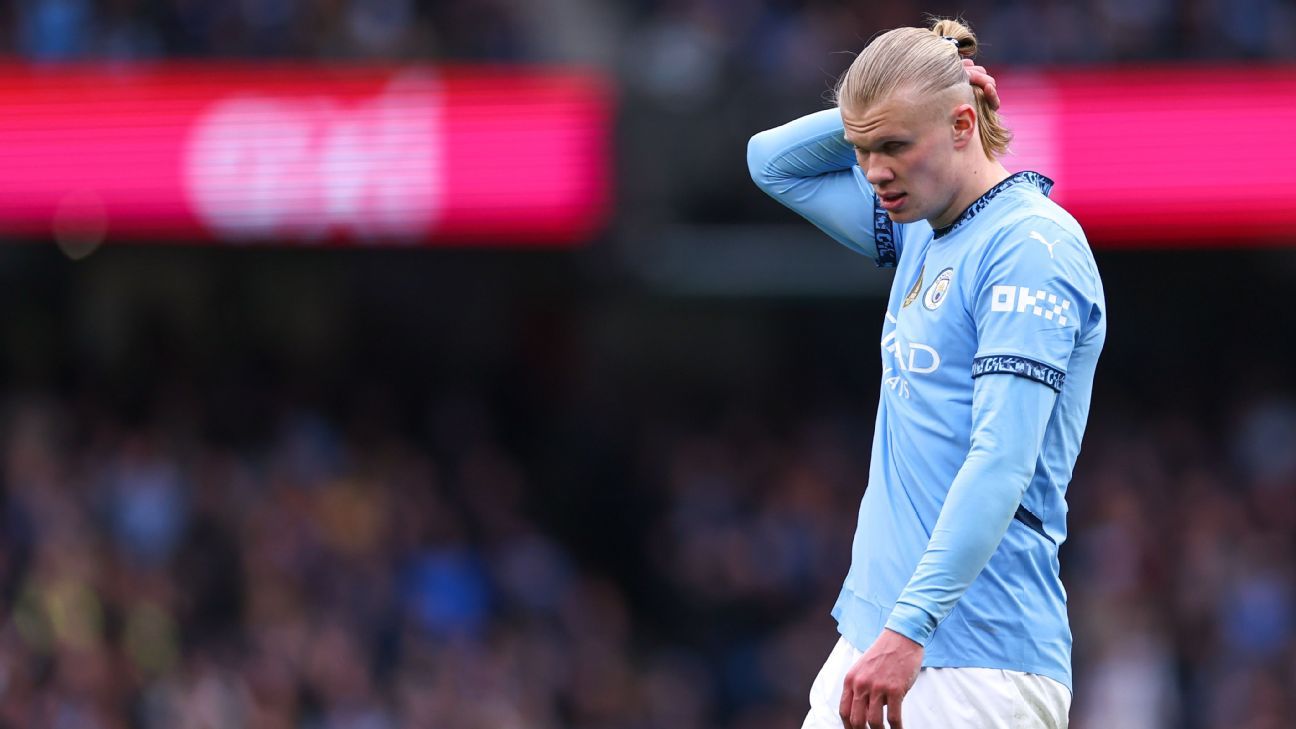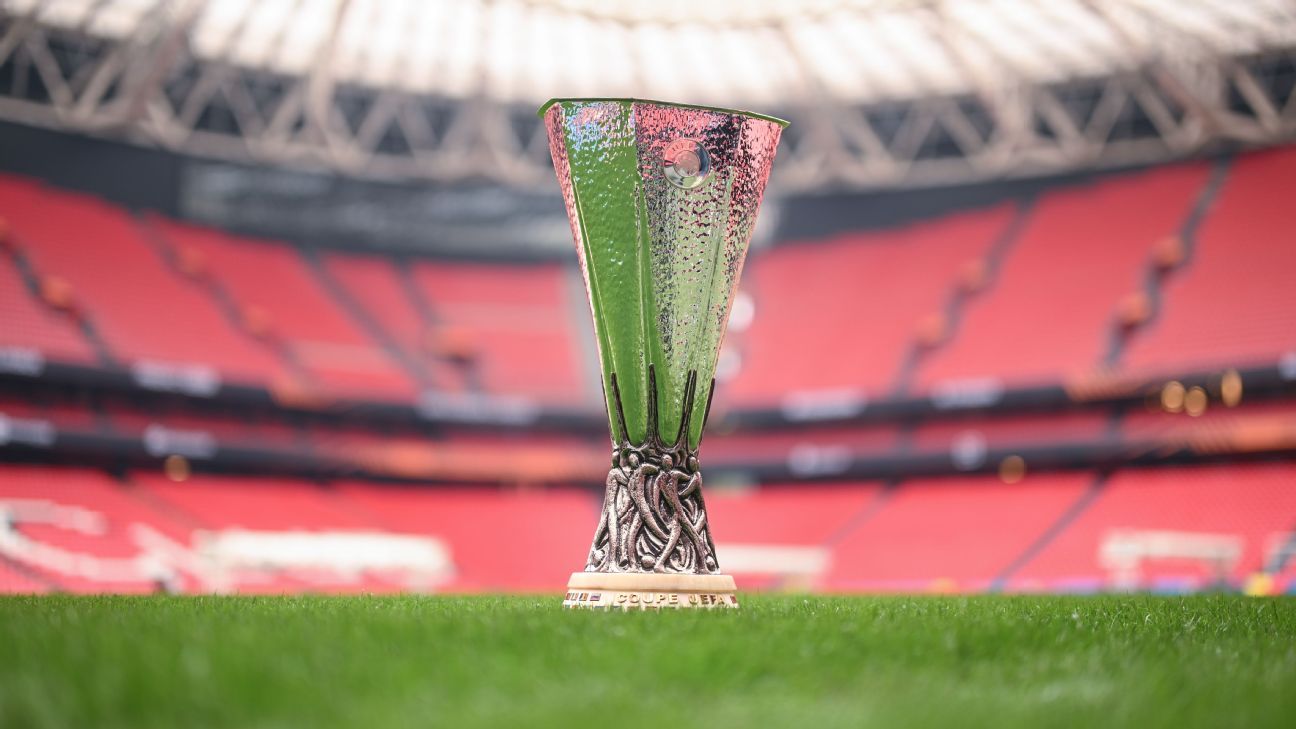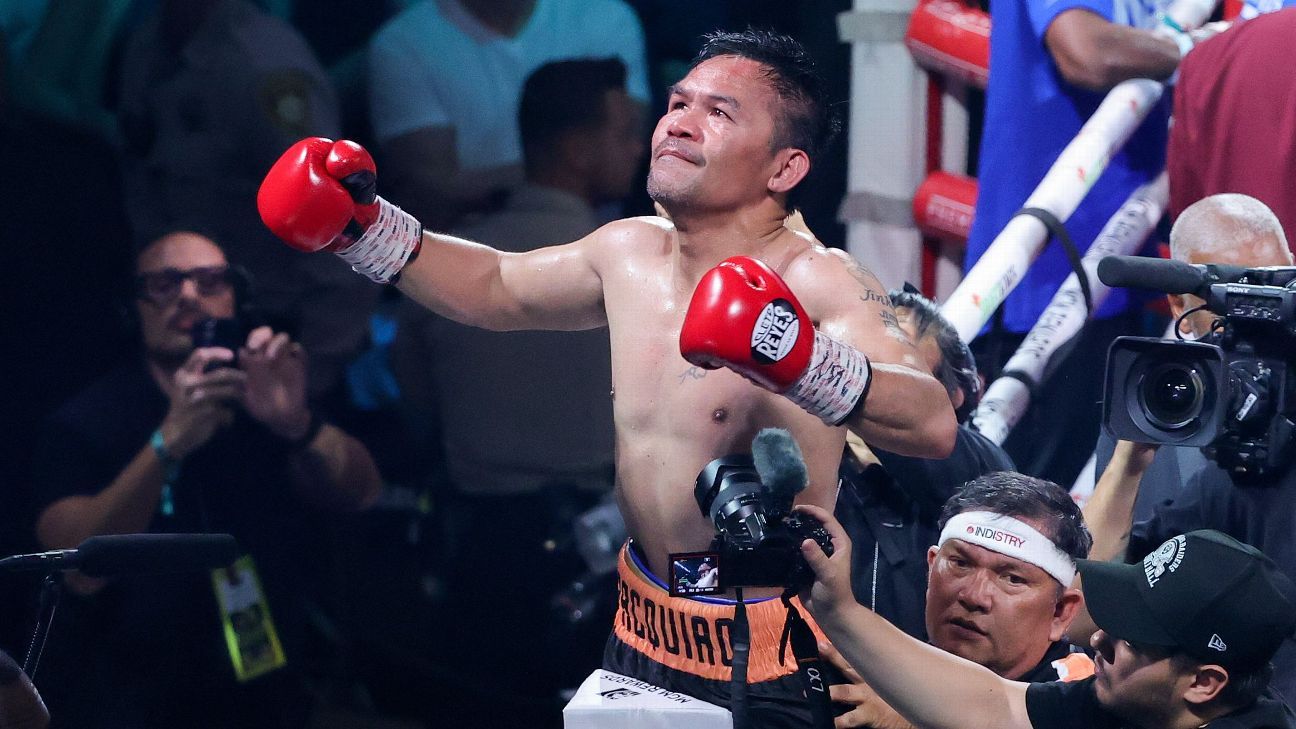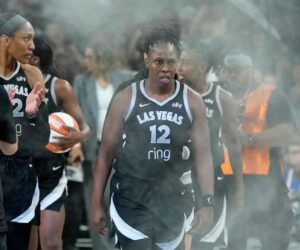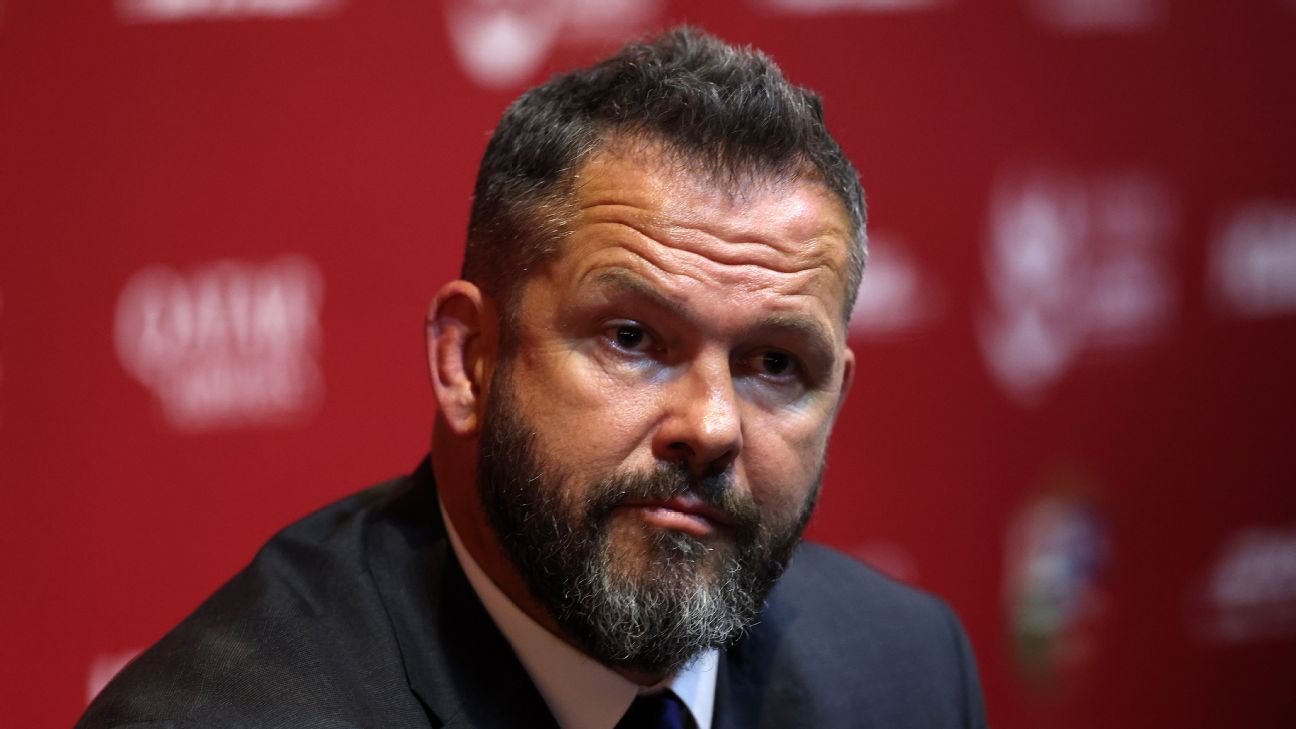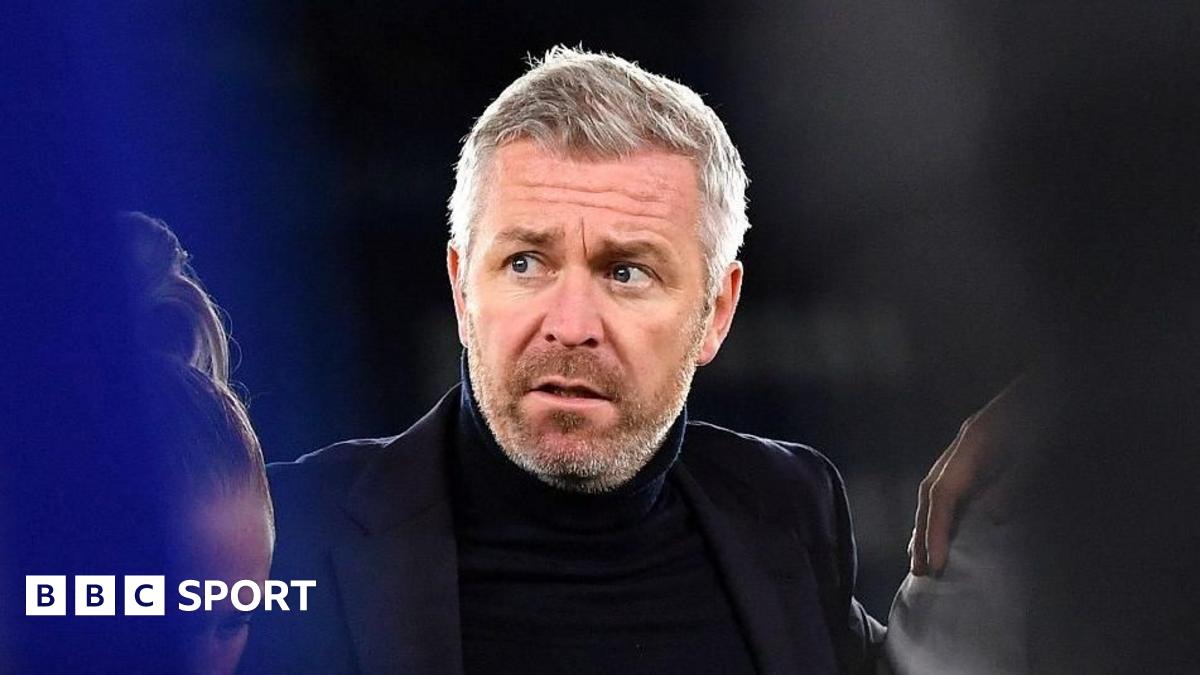Year 3 of Major League Baseball’s balanced schedule brought with it an interesting wrinkle: The Los Angeles Dodgers and San Diego Padres, the sport’s most heated rivals at the moment, didn’t face each other in March, April or May — the first time that had occurred in 25 years. Instead, they played seven times over the course of 11 days in June, a stretch that saw six games decided by no more than three runs and one spill into a benches-clearing fracas.
This month, the Dodgers, Padres, San Francisco Giants and Arizona Diamondbacks, the top four teams in the National League West, staged 17 games against one another in a span of 18 days. Three of them are no worse for the wear. The Dodgers enter Monday holding a 3½-game lead over the second-place Giants; the D-backs, navigating some devastating pitching injuries, remain in fourth place. But the Padres slid. They dropped five of seven to the Dodgers and now sit in third place, five games off the lead.
Moments after the finale at Dodger Stadium concluded Thursday night, Padres third baseman Manny Machado marveled at the competition that surrounds his team.
“This division’s freaking awesome, and it’s going to be a fun ride going down the road,” he said. “The Giants got better with [Rafael] Devers, and we know what these guys [the Dodgers] have on the other side. And what we have on this side. And obviously you can’t count out Arizona. They’ve got a really good team over there. They’re going to be battling. It’s a four-headed monster battling it out, so it’ll be an interesting second half.”
There might not be a better division in baseball, and there’s definitely not a more interesting one. At the bottom is a Colorado Rockies team that, despite a recent four-game winning streak, remains on pace to set the single-season record for losses, one year after the Chicago White Sox went down in infamy. At the top is a Dodgers team lavished with star power but burdened by injury. In between are three fascinating clubs in their own right.
Here are the five biggest takeaways from the wild NL West race at the moment, and what each could mean moving forward.
The Dodgers-Padres feud has reached a new level
Down 5-0 heading into the ninth inning on Thursday, the Dodgers had already begun to empty their bench, more or less waving the white flag. Most of the fans at Chavez Ravine had already filed out. It seemed as if L.A.’s finale against the Padres, the last meeting between these two teams until August, would conclude without incident.
Then everything changed, almost as if the universe would not allow it.
Fernando Tatis Jr. took a fastball to his right hand in the top half of the inning, marking the third time the Dodgers had hit him in a span of 10 days. Padres manager Mike Shildt screamed toward the opposing dugout as he came out to check on his star right fielder. Dodgers manager Dave Roberts sprinted onto the field and shoved Shildt in response. Both benches and bullpens emptied. In the bottom of the inning, Padres closer Robert Suarez plunked Shohei Ohtani in the right shoulder blade with a 100-mph fastball, making Ohtani the eighth batter hit in their four-game series. After the dust had settled, Machado said the Dodgers had better “pray” the scans on Tatis’ right hand come back negative. (They did.)
The Padres have publicly tried to downplay their matchups against the Dodgers in recent years, only to consistently approach them with a clearly heightened intensity. The Dodgers have tried to act as if they’re above it, only to get caught in the emotions, too. There’s no hiding it anymore: These teams do not like each other. The Padres know their road to NL West supremacy runs through the Dodgers; the Dodgers know the Padres remain one of the biggest obstacles in their hopes of repeating.
This rivalry has quickly grown over the past five years, and yet there already seems to be so much history — with the best likely still to come.
Two-way Ohtani is back (sort of)
The sight of a “100” popping up on the radar gun Tuesday brought some uneasiness, both from Dodgers officials and Shohei Ohtani himself. On one hand, it was good to see him find velocity like that after nearly two years away from pitching. On the other, he clearly wasn’t supposed to push that hard.
Ohtani’s return to the Dodgers’ rotation was less about his timeline being expedited and more about changing the setting of his rehab. Throwing simulated games before serving as the designated hitter later that night was more taxing on Ohtani’s body than pitching and hitting simultaneously, prompting him to push to pitch in games that count instead. The Dodgers were fine with that plan because, given Ohtani’s two-way designation, he essentially counts as an extra pitcher. But they still need him to be careful. And they don’t expect him to be stretched out to something close to a traditional starting pitcher until after the All-Star break, which was the initial target.
Case in point: Ohtani was once again limited to one inning in his second start on Sunday, even though he threw just 18 pitches.
“We’re always going to be cautious,” Roberts said. “I don’t know what that even looks like to be fully built up. I don’t think anyone knows what that even looks like, because he’s not a normal starting pitcher.”
The Dodgers have had a really difficult time navigating through pitching injuries once again this year, but they have finally received some better news on that front. Emmet Sheehan made his return from Tommy John surgery earlier this week; Tyler Glasnow and Blake Snell have each been throwing off a mound and making progress. But the Dodgers’ relievers continue to lead the majors in innings by a wide margin, with bullpen games still required once or twice a week. Reinforcements can’t come soon enough.
After an absolute stunner, the Giants have the guy they needed
He was pulled off the Boston Red Sox team plane and informed that he had been dealt from the only major league organization he had ever known, not long after homering in a sweep-clinching victory against the New York Yankees. But people close to Devers described a man who seemed elated in the aftermath of his shocking trade to the Giants. All the drama that surrounded him in Boston, self-inflicted or otherwise, was suddenly behind him.
The following day, while being welcomed by team employees and getting an Oracle Park tour from Barry Bonds, Devers was all smiles. The same can be said for Buster Posey, the Giants’ new president of baseball operations, and practically anybody else affiliated with the team. Because for as dominant as their bullpen has looked, and for how fearsome the one-two punch of Logan Webb and Robbie Ray has become, what the Giants needed most, evaluators believed, was a middle-of-the-order bat — especially one who can take over at first base. Before the Devers acquisition, the Giants had received only a .335 slugging percentage from the position.
Devers began taking grounders at first base immediately, something he was unwilling to do in Boston. The plan is for him to start playing the position whenever he begins to look comfortable — and stay there at least until top prospect Bryce Eldridge graduates to the major leagues.
The Giants began last week ranked third in the majors in ERA but 14th in runs scored. Matt Chapman was nursing a hand injury. Willy Adames held a .201/.284/.340 slash line in the early part of a $182 million deal. Jung Hoo Lee and Mike Yastrzemski were providing a combined .634 OPS since the start of May. The offense was a major concern. Now, it has new life.
The Padres need another bat
Since the start of May, only four teams have a lower OPS than the Padres. The trio of Tatís, Luis Arraez and Xander Bogaerts is slashing a combined .250/.315/.363 during that time. Jackson Merrill, meanwhile, spent most of last week recovering from concussion-like symptoms, during which the Padres lost three of four to the Dodgers. San Diego has gone from one game out of first place to a half-game back of the final wild-card spot in a span of 12 days.
The Padres have some real pitching concerns at the moment. Michael King’s status is uncertain while navigating through a pinched nerve around his right shoulder, a rare injury for a pitcher, and the team’s six most important relievers have already appeared in more than 30 games each. But the Padres’ biggest need ahead of the trade deadline, and what rival evaluators expect them to prioritize, is offense.
These days, they look especially top-heavy. The Padres have received only a .585 OPS from the Nos. 7, 8 and 9 spots in their lineup, lower than every team except the White Sox. Starting pitching could emerge as a major need if King, currently in a rest phase, doesn’t show progress over the next month. But currently the clear target is left field.
Jarren Duran, Luis Robert Jr. and Taylor Ward are among the more prominent names who could be available there. The Padres’ farm system, however, is thin beyond Leodalis De Vries and Ethan Salas, the latter of whom has been dealing with a stress reaction in his back. A.J. Preller will have to get creative. He has been known to.
The D-backs are still in it — for now
The Diamondbacks won four in a row leading up to the morning they learned ace Corbin Burnes, their $210 million offseason splurge, would undergo Tommy John surgery. They followed by dropping three straight. Then winning five straight. Then losing three straight again. With the trade deadline five and a half weeks away, they’re one game over .500, eight games out of first place and sitting behind four teams for the final spot in the wild-card standings.
D-backs general manager Mike Hazen is fielding a lot of calls from rival executives interested in his team’s pending free agents — but at this point, they’ve been told to wait.
If the D-backs do decide to unload, they can drastically change the dynamic of the trade deadline. Want a starting pitcher? They have Zac Gallen and Merrill Kelly. Need offense? Eugenio Suarez and Josh Naylor fit any team seeking power at the corner-infield spots. Bullpen need upgrading? Shelby Miller and his 2.03 ERA might help.
Hazen wants his players to give him a reason to add before the trade deadline, not subtract, but they need to be better in a multitude of ways. Their defense, traditionally a strength under longtime manager Torey Lovullo, has been sloppy. Their bullpen, which has lost closer Justin Martinez and setup man A.J. Puk to elbow surgery, has the fourth-highest ERA in the majors. Their rotation has seen Gallen, Eduardo Rodriguez and Brandon Pfaadt combine for a 6.34 ERA.


